The adoption of the Next Generation Science Standards (NGSS) by many states has exposed a gap between the scope of the expectations of the NGSS and the scope of existing learning models of science. Further gaps exist between research into how students learn science content and the actual practices of science teaching and testing in schools. These gaps make learning science content especially difficult for students with significant cognitive disabilities, and they do nothing to help students with or without disabilities who are falling behind their grade-level expectations. These gaps also compound the problem of too few STEM-capable high school and college graduates coming out of American schools prepared for careers requiring science competencies.
The I-SMART project seeks to narrow the gap between the NGSS and existing learning models of science in order to increase science achievement in students with significant cognitive disabilities and students who are not meeting grade-level expectations in science.
We will address these issues by:
- Expanding existing learning map models of science developed by the Dynamic Learning Maps project. These maps chart out prerequisite knowledge and skills necessary to understand individual science concepts, which helps teachers identify reasons students may not understand new concepts and go back to address gaps in prerequisite knowledge.
- Connecting the expanded science maps to existing learning map models in English language arts, mathematics, and foundational academic skills. Doing so will illustrate the ways science content is interconnected to content in other disciplines. This will help teachers identify areas in other subjects that may be hindering their students’ science achievement. It will also help teachers encourage the development of multidimensional science knowledge and skills in their students, so students can apply science concepts outside the classroom.
- Developing short science assessments that can be used throughout the school year to ascertain students’ progress with science content, which we will pilot to a test group of 4,500 students.
- Developing a reporting dashboard where teachers can see their students’ results on these short assessments. Crucially, this dashboard will also include information about how to interpret those results, as well as recommendations on what to teach next to help address any gaps in students’ knowledge exposed by the assessments.
As we complete these goals, we will document everything we’ve developed, findings about the viability of the short assessments for broad use in schools among the targeted groups of students, and the lessons we learned along the way. We will distribute this information at national conferences for educators and researchers, as well as publish it online.
I-SMART’s ultimate goal is that the information we gain throughout the project can be used by other states to establish improved science education and assessment practices for students with significant cognitive disabilities and students not meeting grade-level expectations.
